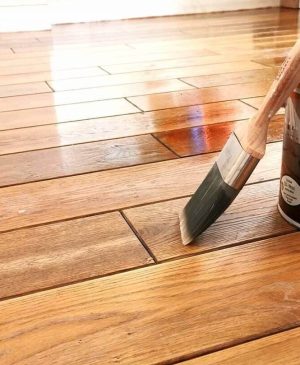Creating a home that is both stylish and welcoming involves more than just filling the space with furniture. It’s about cultivating an atmosphere that reflects your personality, lifestyle, and needs while maintaining a sense of cohesion and balance. One of the most effective ways to achieve this is through thoughtful decor and a consistent theme. While trends come and go, a well-defined theme can give your home a timeless quality, providing a sense of harmony and individuality that makes your space truly yours.
In this article, we’ll explore how to improve your home with decor and theme, offering tips on how to choose a theme that suits your lifestyle and how to incorporate decor elements that bring that theme to life. Whether you’re redesigning a single room or undertaking a full-home makeover, these ideas will help you craft a space that is as beautiful as it is functional.
1. Establish a Clear Theme: The Foundation of Cohesive Decor
A theme is more than just a buzzword—it’s the guiding principle that ties every element in your home together. From the colour scheme to the furniture and accessories, a cohesive theme ensures that your home feels unified, avoiding the chaos that can arise from mismatched styles and random decor choices. Whether you’re going for a modern, minimalist vibe, a cozy farmhouse look, or a vibrant bohemian feel, defining your theme is the first step toward creating a space that feels intentional and well-curated.
To start, think about the atmosphere you want to create. What kind of emotions do you want your space to evoke? For instance:
-
Scandinavian Minimalism: Focus on clean lines, neutral colours, and functional furniture. Natural wood accents, soft textiles like wool or linen, and plenty of natural light will help create a calm, uncluttered environment.
-
Industrial Loft: Exposed brick walls, metal fixtures, and dark wood create a raw, urban feel. Incorporate vintage-style furniture and minimalist decor for a modern but gritty aesthetic.
-
Bohemian Eclectic: Layering bright colours, rich textures, and global-inspired accessories creates a warm, inviting atmosphere. Think patterned rugs, woven baskets, and colorful throw pillows for a lived-in, free-spirited vibe.
-
Coastal or Nautical: Use light, airy colours like whites, soft blues, and sandy beiges. Incorporate natural materials such as rattan, jute, and driftwood, with accent pieces like shells or marine-inspired artwork to bring the ocean indoors.
Once you’ve chosen a theme, everything else—furniture, decor, and even lighting—should work together to support that vision. If your space has no clear theme, it can feel disjointed, with each piece competing for attention. A strong, clear theme will help create a seamless and harmonious environment.
2. Colour Palette: Setting the Mood with the Right Hues
Colour is one of the most powerful tools you have when it comes to creating a specific theme or mood in your home. The colours you choose can influence the overall energy of a room and tie various design elements together. Once you’ve selected your theme, consider a colour palette that complements it.
For example:
-
For a modern and sleek space, consider using monochromatic shades or neutral colours like greys, blacks, and whites. These tones evoke sophistication and elegance, especially when paired with metallic accents like gold or chrome.
-
In a rustic farmhouse theme, warm, earthy tones such as deep greens, soft browns, and mustard yellows will evoke a sense of coziness and timeless charm.
-
Pastel hues like pale pinks, blues, and greens work well in a shabby chic or coastal theme, providing a soft, inviting feel that feels both fresh and nostalgic.
When choosing your colours, keep in mind the overall mood you want to create. Lighter colours like whites, creams, and pastels can make a space feel larger and more airy, while darker tones like navy, charcoal, and deep green can add depth and intimacy.
Remember that colour doesn’t just apply to walls. Furniture, upholstery, rugs, and accessories are also opportunities to incorporate your theme’s colour palette. For example, a neutral sofa can serve as a versatile base, with vibrant throw pillows or a colourful rug to add personality and warmth.
3. Furniture: Marrying Function and Aesthetic
Furniture is a key element in both defining and enhancing your home’s theme. It’s where comfort meets style, and it needs to strike a balance between functionality and aesthetic appeal. The right furniture should not only look good but also serve the purpose of the room it inhabits.
In a modern minimalist home, furniture choices are often streamlined, with an emphasis on clean lines and geometric shapes. Think of sleek sofas, metal or wooden tables, and functional storage solutions that avoid unnecessary decoration. These pieces create a sense of simplicity and order.
In a vintage or bohemian home, furniture can be a bit more eclectic, with mismatched pieces and a focus on comfort. A vintage armchair, a reclaimed wood coffee table, or a patterned ottoman all contribute to a homey, inviting feel. These pieces, while stylish, prioritize comfort and function.
If you’re working with a small space, consider multi-functional furniture. A sofa that converts into a bed, a coffee table with hidden storage, or a bookshelf that doubles as a room divider can save space while staying on theme. Additionally, the scale of the furniture should complement the size of the room. Oversized furniture can dominate smaller spaces, making them feel cramped, while too-small pieces in larger rooms can create a sense of emptiness.
4. Lighting: Enhancing the Atmosphere with Light
Lighting is often an afterthought in home design, but it’s one of the most critical elements in setting the mood of a room. The right lighting not only highlights your decor but can transform the entire atmosphere of a space.
Consider your theme when choosing light fixtures:
-
For a modern or industrial theme, consider pendant lights or track lighting with metal finishes. These add a sleek, contemporary feel.
-
For a bohemian or rustic theme, choose fixtures that incorporate natural materials like wood, rattan, or woven materials. Soft, warm light bulbs can enhance the cozy, lived-in vibe.
-
In a coastal theme, use light fixtures made from glass or driftwood to create an airy, breezy feeling that reflects the ocean.
Layer your lighting to create depth and flexibility in your space. Use ambient lighting for overall illumination, task lighting for reading or working, and accent lighting to highlight artwork or architectural features. Dimmer switches can also be a valuable addition, allowing you to adjust the lighting according to the time of day or desired mood.
5. Decor and Accessories: Adding the Finishing Touches
No space is complete without the finishing touches that make it feel truly lived-in. Decor and accessories allow you to express your personal taste and tie everything together. The key is to strike a balance—while accessories add personality, too many can make the space feel cluttered and chaotic.
For a modern and minimalist space, opt for clean, simple decor items—perhaps a single vase with fresh flowers, a geometric sculpture, or a piece of abstract art. The idea is to let each item stand out on its own, without overwhelming the space.
In a bohemian home, you have more freedom to mix and match accessories. Layering textiles such as throws, cushions, and rugs, along with eclectic accessories like patterned baskets or vintage clocks, creates a space that feels warm and inviting. Personal collections—whether they’re books, travel souvenirs, or antique treasures—are perfect for showcasing your individuality.
For a farmhouse style, embrace rustic decor such as woven baskets, wooden frames, or vintage signage. Natural elements like potted plants or fresh flowers can also enhance the space, bringing an organic, down-to-earth touch.
Mirrors are another great accessory, as they reflect light and make a room feel larger. Choose mirrors with unique frames that align with your theme. For instance, a weathered wooden frame fits beautifully into a rustic or coastal theme, while a sleek, modern mirror with a metallic finish complements a contemporary or industrial space.
6. Personalize Your Space
Ultimately, the best way to improve your home’s decor and theme is to make it your own. Personal touches—whether it’s a family heirloom, a favorite piece of art, or a handcrafted item you’ve picked up on a vacation—help make a house feel like a home. Your space should not only reflect your tastes but also tell your unique story. Consider what brings you joy, and make those items part of your decor. It could be a gallery wall of family photos, a collection of vintage records, or simply a favorite chair that invites relaxation.
Conclusion
Improving your home with decor and theme is an art form that combines creativity, functionality, and personal style. By establishing a clear theme, choosing the right colours, selecting thoughtful furniture, incorporating effective lighting, and adding carefully chosen decor, you can transform any space into one that feels cohesive, comfortable, and uniquely yours. A well-decorated home is not just about aesthetics—it’s about creating a space where you feel at ease, inspired, and truly at home.


















